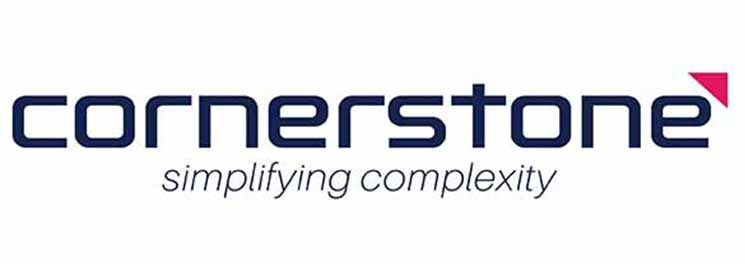
Under the Microscope: Can You de-risk Innovation?
Innovation is, by nature, risky business. However, with the right guardrails and expert partners, much of the risk can be managed.
Whether big ‘I’ or small ‘i’ in nature, all innovation and transformation projects come with risk attached. A large component of successful innovation is the ability to identify and control the risks. The pressure to do so is even greater when facing a period of economic disruption and decreased purchasing power.
Perhaps the single most important factor for a risk-managed transformation project is whether it is aligned with the organisation’s overarching long-term strategic plan. Beyond that, there are a number of risks across the people, process and technology framework that should be taken into consideration from the outset of the project.
Let’s take a look at some of them now.
People
They say that the greatest risk to any transformation is the people involved in it – and with good reason. If they fail to come along for the ride, then the whole effort will have been in vain, no matter how cutting-edge and fit-for-purpose the technology and associated processes may be.
Managing the people-related risk on any transformation program all starts with how you resource the project team itself. At the very highest level, the project sponsor should be a leader who is deeply committed to seeing the project succeed, as well as being willing to advocate for it at all levels across the organisation. In our experience, one of the leading causes of transformation project failure is an executive sponsor who doesn’t really believe in what they’re overseeing, which results in disengagement of the key stakeholders.
Beyond that, it might seem intuitive to stack the project team with the organisation’s biggest advocates for the change (let’s call them the change drivers), however, this is not always the case. Some of the most successful project teams we’ve worked with have included a mix of the change drivers, those who are relatively neutral to the change, and even those who are resistant to it.
The reason this works is because of the diversity factor. Bear in mind that diversity in the workplace isn’t just about gender, socioeconomic and cultural factors – there are also enormous benefits to ensuring a diversity of viewpoints in other ways, including disposition towards technological change. You may even find that those people who were the biggest detractors to start with, become the project’s biggest advocates later on.
Finally, it may be that working with a project specialist early in your transformation is the key to ensuring you have the expertise needed to deliver a supply chain or transformation project. This can provide an independent lens free of any internal resistance to change and ensure the focus remains on the outcomes or benefits that the transformation should deliver.
Not only will this help bring an impartial, expert perspective on what best practice (or good, better, best) really looks like for your industry; you’ll also have an extra layer of continuity assurance in the case of staff movements. For example, people might be moved off the project to focus on other critical work, others may depart the organisation all together. Whatever the case, a partner can supplement any skills, experience and knowledge gaps.
Processes
In our experience, the second biggest risk to a transformation program is typically related to changes in process, and how these are embedded and adopted across the organisation. This is why it is so important to have robust change management structures in place.
Once again, a specialist project partner will be able to bolster your project team’s capability by introducing customisable “tried and tested” change management tools and templates. We like to think of best practice change management as being part science and part art form, bringing together just the right mix of messages, channels and cadence for your unique operating environment. It’s an essential component, so never skimp!
In its simplest form, process change is really about behavioural change – and of course, people can’t be forced to change their behaviour. Thus, it is the project team’s role to influence and model the change that needs to happen; and to demonstrate that the transformation is going to remove noise and complexity, rather than adding it. It’s also helpful if you can demonstrate a dose of the WIIFM factor to as many end-users as possible (WIIFM = What’s In It For Me?).
Whether they are part of the project team or not, consider convening a small group of advocates to help drive the change. This “centre of excellence” will help to generate buzz at the grassroots level and hopefully have everyone else asking for training – rather than you having to push them to take part in it!
You could even consider offering this group targeted testing and training opportunities, prior to broader user acceptance testing (UAT). Sometimes called Systems Integration Testing (SIT), this will not only help you get things right from a technical perspective – you’ll also have an additional opportunity to gather momentum in the earlier stages of the project.
Tools and technology
It’s the great change paradox: While the tool or technology itself represents the most significant financial investment of any transformation project, it usually has the least risk attached to it. Why? In the current era of technology that is largely cloud-based or provided “as a service”, capability has grown exponentially… and continues to do so on a near daily basis.
This means that technology that is not fit-for-purpose reveals itself rapidly, and either fixes are put in place or the solution itself becomes obsolete. Your project partner will be able to provide appropriate guidance on the right solution for your organisation, with consideration for factors including features and functionality, technical support and cost (or more importantly, the value proposition of the return on investment).
The single greatest risk you’re likely to face from a tools and technology perspective is a Franken-System that has not been properly laid to rest. This risk can be largely managed by early engagement with the owners of any legacy spreadsheets – but be prepared for resistance. Consider bringing them into your project team or centre of excellence.
Finally, one of the biggest risks related to tools and technology is what doesn’t get used. All too often, we hear of teams who have invested in a best-in-breed solution, but are tapping into only a fraction of what it can do.
Driving continuous improvement
So many solutions have hidden features and functionality that can help you claim “small ‘I’ innovations”; we always recommend working with a specialist to revisit your existing technology investments around six months after implementation to explore those hidden value possibilities.
For organisations looking to drive continuous improvement in a year of decreased purchasing power, the approach of doing more with what you already have represents very sound business strategy.
We are enablers of change and transformation in Financial Planning and analytics, Information Management, Supply Chain management, Management Consulting, Project Management, and Managed Application Services. Reach out here to have a discussion today or call 1300 841 048.





